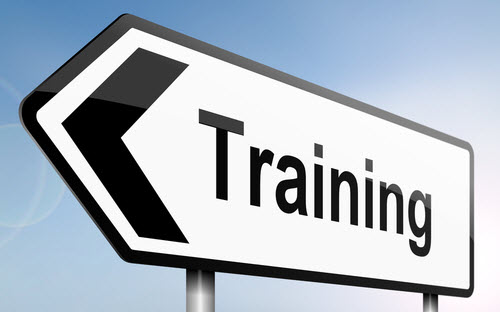 |
Safety training is one of those areas where shaving service or quality can have a seriously negative impact. For one thing, training your workers is your duty under the law. And whether you’re regulated by OSHA, MSHA, DOT, EPA, or state and local entities, the results of noncompliance can be significant.
What’s more, not keeping up with a regular safety training schedule exposes your employees to risk without giving them the tools they need to identify and avoid it.
Then there’s the cost. The price of a serious accident or two can make the most ambitious training budget look like pocket change. And, depending on how you’re insured, those costs can come directly out of your profits. Or, they can result in a nasty spike in your workers’ compensation rates.
So, what do you do when cutting back isn’t an option, but saving money is a mandate? Take a look at these proven ideas from one safety professional and industry insider.
Best Practices from the Field
“We’ve always been huge promoters of safety in our field,” says Dan Klein, former vice president of Disposal Consultant Services, Inc. (www.labpack.net – now a part of Stericycle, Inc. (www.stericycle.com/)). “We try to make training a positive.” Klein shares a number of strategies for moderating the cost of safety training in any industry:
What is the most effective and cost-efficient way to provide safety training for your workforce? Try a demo of BLR’s remarkable TrainingToday® at no cost or obligation.
Group up. As a way to reduce the per-person cost of training, Klein often groups industries together and finds one business willing to host the others. For example, he’ll find a hospital to host other healthcare institutions for a session on regulatory compliance or personal protective equipment (PPE).
Tap local talent. Look inside your organization for would-be safety trainers—people with the interest and temperament to stand before a group. Developing in-house trainers deepens their own commitment, while imparting must-have knowledge to others. Training is also a great way to get employee involvement and buy-in for your safety program. Think up and down the organizational chart—from top execs to the rank and file.
Get creative without the cost. Klein and colleagues developed a Jeopardy-type game that helped beat the boredom of annual HazCom training. He often uses it early in the morning to stimulate people at the beginning of a long training day. Offer a T-shirt, candy, or other modest prize for the winners. In his own presentations, Klein channels kooky personalities like Mr. Wizard or a psychic who performs magic tricks to keep trainees’ attention.
Make the business case. Training budgets can make CEOs a little nervous. Smart safety professionals know how to make the case for investing in worker well-being. “Whether the economy is down or not,” says Klein, “spending $300 per person for training is better than a $5 million lawsuit.” He makes that argument when justifying the cost of training his company sells. If employees or school children get sick because of a chemical exposure that could have been avoided with training, it’s clearly worth the expenditure.
Leverage downtime. Klein will plan an internal training session on the day after a holiday or after a large project has been completed. These are typically slow days; using them for training is more cost efficient than pulling people off the job when production is high.
Document it. A common mistake safety professionals make is forgetting to document informal exchanges that could legally be considered training. This is especially true, says Klein, when working toward the required 8-hour EPA annual refresher course. In many instances, safety or environmental trainers must be certified. But that’s not always the case. An informal hour-long session led by a knowledgeable supervisor on radioactive awareness, for example, can count as part of required instruction.
Snap it. Safety professionals should keep powered-up digital and video cameras handy. Klein uses them to document projects as a way to capture lessons learned. The still pictures or video can be incorporated into training. Not only is this method inexpensive, but the images reflect the real work and risks employees face—not generic hazards from an off-the-shelf DVD.
Feed them. Sure, it costs a little, but Klein believes that providing lunch is a great way to get people to pay attention and to stay put. If trainees leave for lunch, it’s easy to lose them. Klein suggests providing a meal, as well as the opportunity for participants to ask the trainer individual questions during the break. Getting people engaged is worth the price of a turkey sandwich.
Try a demo of BLR’s remarkable award-winning TrainingToday® at no cost or obligation. This includes the Workplace Safety Library. Get the details.
In tomorrow’s Advisor, we’ll offer several budget-friendly training resources that you can tap into to continue to provide effective safety training with limited resources.
